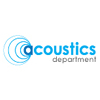
|
Timothy Marston Principal Engineer tmarston@uw.edu Phone 206-221-5267 |
Education
B.S. Electrical Engineering, Seattle Pacific University, 2004
M.S. Acoustics, Penn State, 2006
Ph.D. Acoustics, Penn State, 2009
Projects
|
MuST — Multi-Sensor Towbody A modular system of subsea acoustic sensing and topside data acquisition and processing technologies detect, geolocate, and classify UXOs, as well as buried cables, archeological artifacts, and other structures. |
7 Mar 2022
|
|
Publications |
2000-present and while at APL-UW |
An extensible software defined sonar for arbitrary phased array dimensionality Mower, J.M., J. Maier, T.M. Marston, C. Timme, S. Bachelor, S. Kahle, and D. Deitz, "An extensible software defined sonar for arbitrary phased array dimensionality," Proc., OCEANS 2025, 16-19 June, Brest, France, doi:10.1109/OCEANS58557.2025.11104514 (IEEE, 2025). |
More Info |
16 Jun 2025 |
|||||||
|
The University of Washington Applied Physics Laboratory has been developing next-generation software-defined sonar systems for a high level of modularity and adaptability. At the heart of this is mid- to high- frequency 64-channel unit that can be phase- and time-disciplined and combined to any number of channels. By combining modern advances in software-defined radio, ultrasound electronics miniaturization and cost reduction, modular timing, novel transducer construction, flexible interface, and real-time signal processing, we demonstrate an extremely flexible and capable sonar. At this time, we have successfully built and demonstrated 64, 128, 192, 256, and 640 element acoustic uniform linear phased arrays operating at greater than octave bandwidth. In addition, a modular 2D array is currently in development. These systems have been designed to support DC - 7 MHz acoustics; the base electronics can directly be integrated with an unmatched transducer, typically above 500 kHz where on-board drive voltage is suitable for piezoceramic transducers operating at high frequency. SWaP-C is significantly improved by the utilization of recent integrated circuits. For lower frequencies, an add-on higher-voltage driver and Transmit/Receive (TR) card is placed between the software defined sonar module and transducer. |
|||||||||
Motion tracking of fish and bubble clouds in synthetic aperture sonar data Marston, T.M., B.R. Hall, C. Bassett, D.S. Plotnick, and A.N. Kidwell, "Motion tracking of fish and bubble clouds in synthetic aperture sonar data," J. Acoustic. Soc. Am., 155, 2181-2191, doi:10.1121/10.0025384, 2024. |
More Info |
21 Mar 2024 |
|||||||
|
Data captured by a Synthetic Aperture Sonar (SAS) near Mobile Bay during the 2021 Undersea Remote Sensing experiment funded by the Office of Naval Research reveals near surface bubble clouds from wave breaking events and a large aggregation of fish. Tools developed for using SAS data to image hydrodynamic features in the water column were applied to observations of the bubble clouds and fish aggregation. Combining imagery and height data captured by the sonar array with a detection and tracking algorithm enables the trajectories, velocities, and behavior of fish in the aggregation to be observed. Fitting the velocity and height data of the tracked objects to a Gaussian mixture model and performing cluster analysis enables an estimate of the near-surface ambient velocity via observation of the movement of the bubble traces and the general direction of motion of the fish aggregation. We find that the velocity traces associated with bubbles are consistent with ambient currents as opposed to the direction of propagating wave crests while velocities of fish indicate relatively large, pelagic species. |
|||||||||
Three-dimensional observations of tidal plume fronts in estuaries using a synthetic aperture sonar array Marston, T.M., C. Bassett, D.S. Plotnick, A.N. Kidwell, and D.A. Honegger, "Three-dimensional observations of tidal plume fronts in estuaries using a synthetic aperture sonar array," J. Acoustic. Soc. Am., 154, 1124-1137, doi:10.1121/10.0020671 |
More Info |
22 Aug 2023 |
|||||||
|
Synthetic aperture sonar (SAS) systems are designed to observe stationary scatterers located near the sediment interface. Less commonly, a SAS system may be used to observe scattering features located above the sonar in the water column. The Undersea Remote Sensing (USRS) project, sponsored by the Office of Naval Research, was a collaborative Directed Research Initiative (DRI) focused on studying dynamic estuarine water column features. During the USRS DRI, researchers from multiple institutions gathered to observe tidal features at various estuaries along the coast of the United States using both in situ and remote sensing techniques, including SAS. The first studied estuary was the mouth of the Connecticut River (CTR). Data captured by a SAS system deployed during a tidal event were post-processed to create three-dimensional observations of the structure of the leading edge of the CTR's ebb plume front. From these observations, lobed structures similar in scale to previously reported instabilities are revealed, with the present observations providing additional insight regarding the structure of the bubble distribution behind the front. Velocity estimates of plume features were also determined from SAS data and shown to compare favorably with concurrent marine radar estimates. |
|||||||||






